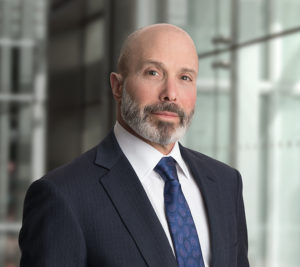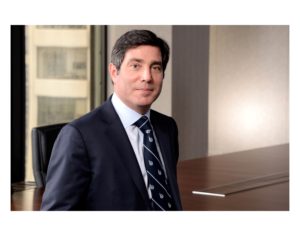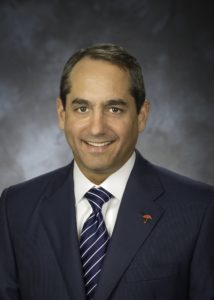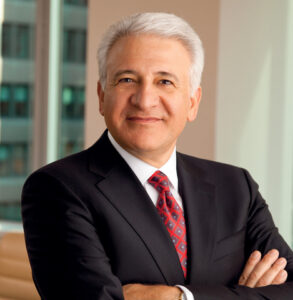Sure, it’s nice to know whether Spring is around the corner or more than a month away, but what about insurance market conditions?
How long will a hard market last in many lines? Are insurance prices high enough? Where will combined ratios land? Who’s in and who’s out of the property reinsurance market? Will cedents buy more limits or sit tight with what they have given the trajectory of reinsurance prices?
Executives of property/casualty commercial insurance and reinsurance companies made predictions to answer some those questions during earnings conference calls in January and early February. In addition, last week analysts from Standard & Poor’s predicted that the industry as a whole will report its first underwriting loss since 2017 in a report titled, “U.S. Property/Casualty Insurers Face Declining Investment Values And Personal Lines Loss Cost Inflation.”
Here, we share some details of the forecasts from both contingents.
Casualty Not High Enough
Chubb Chief Executive Officer Evan Greenberg gave a rundown of Chubb’s price increases in the fourth quarter of 2022 vs. loss cost jumps for various segments of P/C insurance business, and called out the gap between the two in North America casualty lines as being too small.
“Given casualty loss cost trends, rates in most classes need to rise at an accelerated pace. There is little to no room for forgiveness. And here, a special mention to excess casualty and auto-related liability is warranted,” he said.
Prefacing his remarks with an overview of all lines, Greenberg said that “in most lines, additional rate is required primarily to keep pace with loss costs, which…are hardly benign in both long-tail and short-tail lines. To illustrate, in the quarter, pricing for total North America Commercial P&C, which includes both rate and the portion of exposure that supports rate, increased 6.5 percent, with loss costs up 6.5 percent as well.”
“That’s the headline,” he said, going on to drill down with specifics on property, where pricing is nearly 8 percentage points above loss cost trend, and casualty, where pricing is just adequate—up 7.5 percent vs. a loss cost trend of 6.9 percent. Later, asked how that 6.9 percent compared to prior quarters, Greenberg said the loss cost trend is stable.

In the quarter, pricing for total North America Commercial P&C, which includes both rate and the portion of exposure that supports rate, increased 6.5 percent, with loss costs up 6.5 percent as well. That’s the headline.”
Evan Greenberg, Chubb
His prior comments excluded some professional lines and workers compensation where aggressive pricing is pushing rates down. “In comp, I don’t know what to tell you. The market has to draw a line and I think that moment of truth is coming,” he said later.
What NCCI Is Missing
Over at W.R. Berkley Corp., President and CEO W. Robert Berkley, Jr. doesn’t see the moment of truth coming for in workers comp for a while. “I had thought that the world would have figured it out by now as far as where things are going and what people need to be doing from a loss cost perspective,” Berkley said. “Clearly, I was mistaken. From my perspective, …comp is likely going to continue to bump along the bottom throughout ’23. We can look forward to ’24 and beyond hopefully for some considerable firming,” he said.
Also critiquing comp rating bureaus for indications of “rate decrease after rate decrease after rate decrease,” Berkley said, “It’s a little bit unnerving that some rating bureaus seem to not be appropriately taking into account or adjusting for the frequency benefit that occurred during the COVID. Additionally, one needs to be very thoughtful about severity trend as well, and what that could mean in the future, especially on the medical front.”

“The property market is poised for material hardening…We’ve seen it begin to sprout some green shoots of discipline in the insurance marketplace with undoubtedly more to come.”
Robert Berkley, Jr., W.R. Berkley Corp.
Expanding on the medical inflation component later in the call, Berkley focused on the challenges facing medical care providers and how that will play out. “By and large, most hospitals and health systems find themselves in a very difficult place. If you look at their financials, their economic models, it’s not sustainable. So ultimately, they’re going to have to figure out a way to improve their position. And they’re certainly not going to get a better outcome from the public sector or the government. That leaves the private sector [from which] to get their pound of flesh,” he said, adding that he also doesn’t see anything will “change the realities of pharma inflation” in the intermediate term.
Later, he suggested that “a lot of state rating bureaus and NCCI…just need to be… conscious of what is going on out the front windshield, not solely consumed by what’s in the rearview mirror.”
Looking out the window and mirror at commercial auto, Berkley said, “I don’t think that there is a product line today that is more susceptible than auto to social inflation….The good news is there is rate to be had if you go after it. The challenging news is that you better make sure you’re getting it otherwise it’s very easy these days to fall behind loss costs.” Later, he added, “When you drive up and down I-95, you see more billboards for plaintiff attorneys than you do for fast food. So that’s probably not a great sign.”
The specialty insurer CEO said there are bright spots of opportunity—and rate to be had—in general liability, excess and umbrella lines. But he cautioned that large account excess business (Fortune 5,000 towers) is an area on Berkley’s watchlist for potential trouble.
Property Pricing and Fire Alarms
“The property market is poised for material hardening,” Berkley said as he described head-scratching delays to go after rate in the property insurance market last year. Given that everyone knew reinsurance pricing was going to go up, he expected to see the harder primary pricing in the fourth quarter. “We’ve seen it begin to sprout some green shoots of discipline in the insurance marketplace with undoubtedly more to come,” he reported.
“The increased demand we anticipated was retained by insurers, as at the time they were unwilling to pay additional rate this marginal demand would require. Over time, we expect this risk to return to the reinsurance market as macroeconomic forces such as inflation and climate change continue to drive overall risk in the system.”
Kevin O’Donnell, RenaissanceRe
At RLI Corp., Chief Operating Officer Jen Klobnak reported that the specialty insurer made some anticipatory moves on property—raising prices and honing terms and conditions, including loss-sharing features like coinsurance and deductibles—throughout 2022. Asked directly about passing on a 40 percent jump in RLI’s reinsurance costs to customers, however, Klobnak described a measured approach. “As we look at our renewal process, we quote 30 days to 60 days out, so that we can help our insurers manage their business. They’ve got a lot of increased costs already. They’ve got increased employee costs, … transportation costs, all kinds of costs that are going up. We’re one component of their business. And we try to help manage their ability to stay in business by not taking too drastic of actions.”
“In contrast, I would say, the reinsurance market acted a little more quickly on their change—on both attempted change in coverage as well as cost. And so, it’s difficult to turn on a dime and pass that along, nor is it really something you want to do when you’re trying to be very consistent in the primary market.”
Jen Klobnak, RLI Corp.
Even in Florida, RLI continues to individually underwrite each renewal. “Yes, our costs have gone up. So yes, we will increase costs to some extent. But we’re going to try to manage it over time so that our insureds can continue to be insured,” she said, noting that RLI’s broker partners are also accepting a little bit less commission “so that we’re able to provide that change in coverage and terms a little more gracefully to our insureds.”
“The danger of [any] abrupt change is that the insurance marketplace actually decreases because people will attempt to buy less coverage or less limit. And once they start doing that, that’s never going to come back,” she said.
On the reinsurance side, Kevin O’Donnell of RenaissanceRe reported that the sticker shock of higher property reinsurance prices meant that insurance carriers decided not to buy any additional limits during Jan. 1 renewal period. “The increased demand we anticipated was retained by insurers, as at the time they were unwilling to pay additional rate this marginal demand would require. Over time, we expect this risk to return to the reinsurance market as macroeconomic forces such as inflation and climate change continue to drive overall risk in the system,” he said.
While catastrophes like Hurricane Ian were top of mind on the loss side of the equation, Berkley sounded an alarm on fire losses during the quarter. “It wasn’t in any particular operating unit. It was pretty widespread. And that added somewhere between 1-1.5 points to the loss ratio. We saw it both in the insurance business among various operating units, and we saw it in the reinsurance business too,” Berkley said, noting that the company is focused on understanding this better. “I’m not a big believer and good luck and bad luck, which is why we are digging,” he said.
The Pole Position
North America is the place for insurers to be according to Alan Schnitzer, chief executive officer of Travelers. “Given the economic instability and geopolitical risk around the world, we feel very good about our concentration in North America, the largest, most advanced and most stable economy in the world, where we have the pole position and plenty of room to grow,” he said.
 “Given the economic instability and geopolitical risk around the world, we feel very good about our concentration in North America, the largest, most advanced and most stable economy in the world, where we have the pole position and plenty of room to grow.”
“Given the economic instability and geopolitical risk around the world, we feel very good about our concentration in North America, the largest, most advanced and most stable economy in the world, where we have the pole position and plenty of room to grow.”
Alan Schnitzer, Travelers
Addressing questions on the commercial insurance pricing environment, Schnitzer said, “It’s hard to characterize this pricing environment as anything other than very strong,” referencing a 10.1 percent renewal premium change for domestic business insurance for the last quarter of 2022—a historically high level for Travelers that has been relatively stable across eight quarters. “The breadth of the pricing gains across our book is very strong and very consistent,” he said, noting that customer retention was also at record levels. “The pricing gains that we achieved were broad-based, led by property, auto, umbrella and CMP. And then you take all that against the margins that we printed and we just feel fantastic about the pricing and the overall execution this year. And we’re going to go out and do it again in ’23,” he said.
For the year, Travelers reported its “best ever underlying combined ratio” in the carrier’s Business Income [BI] segment (92.5), growing net written premiums by 6 percent. “Even with continued strong pricing across the board, retention in BI reached a record high 88 percent” in the fourth quarter, Schnitzer said, adding that “strong retention is a sign of a stable and rational pricing environment.”
Combined Ratio Reports and Forecasts
Schnitzer also noted the benefits of diversification, pointing out that Travelers’ Personal Insurance combined ratio was better than its Business Insurance combined ratio in five of the last 10 years. That was not the case in 2022, with Travelers Personal Insurance combined ratio coming in at 104.9.
Of the insurers and reinsurers that reported results so far, RLI posted the best full-year 2022 combined ratio so far quarter at 84.4, with Chubb reporting the only other sub-90 result. For RLI, the figure marked the 27 consecutive years of underwriting profit, and Carrier Management groundhogs wouldn’t bet against a 28th even though, like other insurers, RLI accepted a higher retention on its property reinsurance at 1/1.
RLI CEO Craig Kliethermes said, “A hard reboot in the reinsurance market, continued multifaceted inflation and weakened balance sheets should provide a stronger backbone to the industry’s underwriting discipline and be supportive of more firming. Assuming the competitive environment responds rationally, we anticipate rate increases and disruption that should create new opportunities for profitable growth. We’ve already seen additional improvement and price terms and conditions in the property market at the end of 2022.”
Craig Kliethermes, RLI Corp.
Kliethermes noted that the trade for “low attaching earnings protection from high quality reinsurers” made sense at the favorable prices of the past. “Given our conservative balance sheet, diversified portfolio of specialty products and underlying profitability, we have always retained the optionality to take more net, where the expected reinsurance ceded margins exceed fair return. We believe the cost of property reinsurance increased beyond that point at 1/1,” he said, adding that RLI remains optimistic about the expected underlying profitability of its portfolio. “We believe we are in a strong position to capitalize on disruption that we expect to ensue,” he said.
While earnings call commentary from personal lines insurers was not yet available as this article was going to press, a review of early reports from Progressive, Allstate and Kemper shows that only Progressive delivered an underwriting profit last year. Coming in even higher than Travelers, Allstate reported a 106.6 combined ratio for the year (110.1 just for the auto line) and Kemper expects to report a 114 (108 for personal auto alone).
“For 2023, we expect personal auto insurers to continue pursuing rate increases in the mid- to upper-single digits as they attempt to catch up with elevated claims costs,” S&P said in its report. For commercial lines, S&P noted the gradual slowdown in rate increases over the last two years, and expects 2023 rate hikes to stabilize in the 5-7 percent for standard commercial lines—a level that S&P believes will remain above loss cost trends.
“These expectations should lead to a modest improvement in the industry’s statutory combined ratio to 99-101, assuming catastrophe losses contribute about 8 percentage points to the loss ratio,” the S&P report says. While that means the industry might see an underwriting profit in 2023, S&P is putting its estimate of the full-year 2022 combined ratio in the 101-102 range, which would be the worst result since 2017 (103.9), and above the 10-year average of 99.6 (2012-2021).

S&P is putting its estimate of the full-year 2022 combined ratio in the 101-102 range, which would be the worst result since 2017 (103.9), and above the 10-year average of 99.6 (2012-2021).
The projected improvement for 2023 assumes continued work from personal auto insurers to restore their profit margins, and assumes that the U.S. economic outlook does not deteriorate materially beyond what the S&P Global economics team currently projects—a modest deterioration in GDP of 0.1 percent in 2023.
“Many personal lines insurers have struggled to increase rates to keep pace with the inflationary pressures. We predict that inflation likely peaked in third-quarter 2022 but will remain high until late 2024,” S&P said. “The inherent lag in achieving rate adequacy due to the time it takes for rate increases to be filed, approved, and earned will likely continue to pressure personal lines insurers’ underwriting income until mid to late 2023.”
Across the industry, deteriorating operating performance and capitalization in 2022 led S&P analysts to bump up the universe of U.S. P/C insurers with negative rating outlooks to 19 percent from 8 percent. “We expect to downgrade those insurers whose capitalization has fallen materially below our expectations and whose projected earnings and capital management options, in our view, will be insufficient to rebuild capitalization to a level consistent with our current ratings over the next 24-36 months,” S&P said.
In or Out?
Even though the residential property insurers hadn’t offered commentary on their results as of Feb. 1 (when this article was being compiled), property was the hottest topic on insurer and reinsurance earnings calls—and the question of who was in and who was out of the reinsurance market was on the minds of investment analysts.
If the conditions are right, both in terms and in pricing, then Chubb is a risk taker in property cat,” said Greenberg. “We will increase. However, it’s not a business we need to chase by any means.
“Look, we have a very clear mind about [the] adjusted returns we would expect to see in property cat to increase our exposure. And we’re in the middle of the market. So, I’m not going to comment any further than that, except that if the conditions are right, both in terms and in pricing, then Chubb is a risk taker in property cat,” said Greenberg. “We will increase. However, it’s not a business we need to chase by any means. And so we will only deploy additional capital to take more exposure if we like the trade.”
 Declining to provide more specifics, he said, “I’m hardly going to look forward and talk about it while we’re on the field of play. You’ll see the footprints after the fact.”
Declining to provide more specifics, he said, “I’m hardly going to look forward and talk about it while we’re on the field of play. You’ll see the footprints after the fact.”
Berkley is making footprints too—in property insurance and reinsurance.
“We are thought of by some as a not a property market. And quite frankly, while we have [had] more of a liability bent, [but] it would be a mistake to think that we do not have the skills and the appetite for property, when we think it makes sense—when we believe it is a good risk adjusted return, And there is a better than average chance from our perspective, the marketplace is moving in that direction,” Berkley said.
On the reinsurance front, he highlighted the current discipline in the market. Using the old expression that “even a broken clock is right twice a day,” he said “this is one of those moments when the clock is right,” while wondering aloud how long reinsurers would stick to disciplined underwriting and pricing. “Clearly, it was a firming marketplace. We did participate in that,” he said, referring to 1/1 renewals, noting that the U.S. market was considerably more attractive than business outside of the U.S.
“We saw it as an opportunity, but I don’t think you should assume that it’s reshaping our book of business as an organization…. We put more than a toe in the water, but not more than a foot. And that’s just because of our view of volatility. In addition to that, we’re going to see what type of opportunities there are in the first quarter and the balance of the year, particularly with some shortfalls in certain market participants covers,” he said.
Remaining out of the property reinsurance market is AXIS Capital. “For AXIS Re, notwithstanding the finalization of our exit from property and property catastrophe markets,” announced in midyear 2022, “our market presence remains strong and relevant as indicated by recent renewal activity” for specialty reinsurance business, said CEO Albert Benchimol.

“Our decision to exit the reinsurance property and casualty markets did not materially impact our ability to access and retain the business that we wanted.”
Albert Benchimol, AXIS Capital
“We estimated losing less than $10 million of desired renewals due to our exits from property and property cat reinsurance,” while maintaining a 90 percent retention ratio on “addressable non-property-related renewals,” with 12.5 percent rate increases. Half of AXIS Re’s new business, he said, came from targeted credit and surety, cyber and A&H lines.
“We are encouraged that these statistics indicate our decision to exit the reinsurance property and casualty markets did not materially impact our ability to access and retain the business that we wanted…Importantly, we are in the markets where we want to be and where we have strong positioning that allows us to take advantage of what we expect will be continued favorable conditions for the foreseeable future buoyed by rising demand for specialty coverage.”





















 Is the AI Boom a Bubble Waiting to Pop? Here’s What History Says
Is the AI Boom a Bubble Waiting to Pop? Here’s What History Says  Northern California Flooding This Weekend Caused by Heavy Rain, High Tides
Northern California Flooding This Weekend Caused by Heavy Rain, High Tides  NOAA Announces Latest AI-Driven Global Weather Models
NOAA Announces Latest AI-Driven Global Weather Models  How Insurers Can Avoid Post-Merger Technology Failure
How Insurers Can Avoid Post-Merger Technology Failure 


